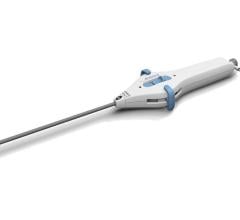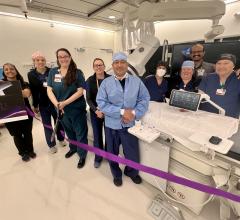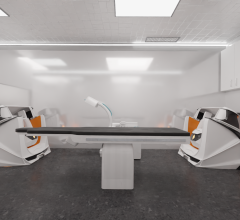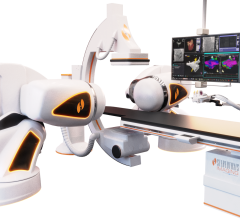
Image: Getty Images
May 4, 2022 – Stereotaxis, the global leader in innovative robotic technologies for the treatment of cardiac arrhythmias, celebrates the achievements of the highly skilled electrophysiology team at The Heart Centre Rigshospitalet, Copenhagen University Hospital for successfully completing more than 5,000 robotic cardiac ablation procedures using Denmark’s only robotic system for the treatment of heart rhythm disorders.
The Heart Centre Rigshospitalet at the University of Copenhagen is the leading user of advanced robotic technology for the treatment of cardiac arrhythmias among a hundred hospitals globally. Electrophysiologists use the technology to repair the electrical circuits of the heart in a minimally invasive procedure called cardiac ablation. Robotic technology is designed to provide increased precision and safety during the procedure. The experience of Rigshospitalet across 5,000 procedures demonstrates these benefits with exceptional procedure success and safety records. Since its installation in 2006, Rigshospitalet physicians have used Stereotaxis RMN technology to treat a broad range of patients including complex cases unsuitable for traditional treatments. Among the thousands of patients who have benefited from robotic ablation are pediatric and congenital heart disease patients.
Clinical cardiac electrophysiologist, Dr. Xu Chen, leads physicians in the world with the most robotic cardiac ablation procedures performed with Stereotaxis technology, having completed over 4,000 procedures. Dr. Chen has contributed to a significant body of clinical evidence on the use of robotics in electrophysiology by authoring and collaborating on 13 peer-reviewed studies.
“We are proud to celebrate this milestone and our contribution to improving patient care and advancing important technology for our field,” said Dr. Peter Karl Jacobsen, Head of Invasive Electrophysiology, ablation section, cardiology at Rigshospitalet.
“We have always pursued the best treatment for our patients and are glad we could help so many patients effectively and with great safety,” added Dr. Chen, Chief Physician and clinical cardiac electrophysiologist at Rigshospitalet.
Tens of millions of individuals worldwide suffer from arrhythmias – abnormal heart rhythms that result when the heart beats too quickly, too slowly, or with an irregular pattern. When left untreated, arrhythmias may significantly increase the risk of stroke, heart failure, and sudden cardiac arrest. Robotic Magnetic Navigation introduces the benefits of robotic precision and safety to cardiac ablation. Robotic cardiac ablation is performed using a soft magnetic catheter navigated inside the heart by a physician seated at a computer cockpit. The physician navigates the catheter using precise, robotically actuated magnets positioned on either side of the patient.
“We celebrate the Rigshospitalet electrophysiology team on this significant milestone,” said David Fischel, Stereotaxis Chairman and CEO. “To have treated 5,000 patients is an extraordinary feat. It reflects an outsized impact Rigshospitalet has had on advancing patient care, clinical science, and technology development in electrophysiology.”
For more information: www.rigshospitalet.dk/english/


 July 31, 2024
July 31, 2024 








